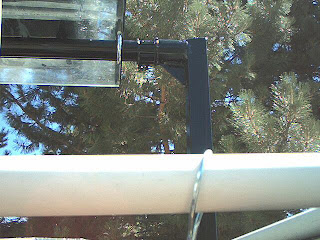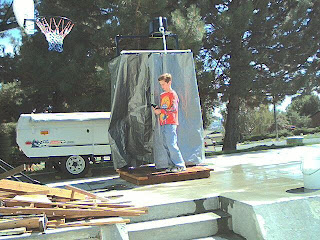
Last week we showed how the Attitude 1.5 was built and the reason that the original Attitude was morphed into the new version. The new version Attitude 1.5 has an enormous amount of potential since Freescale has such a wide range of products that can be used.
The best part of the Freescale offerings is that there product lines are scalable. The Attitude 1.5 lost favor as a development platform for Edge Products
 because they termed the 1.5 to be too expensive. Edge Products, may not have been aware of the history of the development of the Attitude 1.5 however nor the breadth of the offerings from Freescale.
because they termed the 1.5 to be too expensive. Edge Products, may not have been aware of the history of the development of the Attitude 1.5 however nor the breadth of the offerings from Freescale.
Because the Attitude 1.0 was to be re-designed originally because of the constraint of memory, considerations were to have more memory and more capability as a development platform. One of the original considerations that went into the development was the fact that Freescale has a huge product selection. Originally the only consideration from Edge Products was that the Attitude 1.0 was at the end of it's usable life because of the 64k of memory restrained the addition of new features.
In planning for the future however the design team (myself, Mike Sorenson and Dave Bigelow) didn't want to be constrained by hardware ever again, so after looking at several other microcontrollers, TI, Infineon, Philips, NEC and others because of the wide range of Freescale parts available Freescale was selected for long term use.

Additional savings were planed because several of the Juice modules were developed with the 9S12 as the controller. Overall the savings would add up because of the economy of scale as the number of processors purchased across the product line increased. The Attitude 1.5 had features that would allow it to be used in a serial network as a node as well as stand alone analog to digital interface capability, as well as having three CAN, buses, I2C, a version had J1850 in hardware, SPI, and asynchronous and synchronous serial communication available on the chip as well as brought out to a PC board connector; as you can see the system was built to be very flexible.
As a side note, Edge Products decided to re-design the Evolution II which was a derivative of the Attitude 1.5 product using the Philips LPC series of microcontrollers. As stated previously,
 Freescale even has a version of the 9S12 that uses J1850 protocol native to the hardware of the processor for vehicle communication. This necessary feature had to be hand coded into the software of the Evolution (code named Chameleon) .
Freescale even has a version of the 9S12 that uses J1850 protocol native to the hardware of the processor for vehicle communication. This necessary feature had to be hand coded into the software of the Evolution (code named Chameleon) .
Another reason to use the Freescale parts is because Freescale has a very well thought out roadmap – As a side note, the Philips offerings are not automotive temperature approved. This means that Philips can “down grade” the manufacture of the microcontrollers without having to notify end users. This could have an impact on the reliability of the products that the Philips processors go into.
 Although the dealers and distributors of Philips indicated that the processors are “as good as automotive”, they didn’t go through the rigors of certification; another plus for using Freescale parts.
Although the dealers and distributors of Philips indicated that the processors are “as good as automotive”, they didn’t go through the rigors of certification; another plus for using Freescale parts.What I have found when a Freescale product is changed or obsolete, there is an upgrade roadmap. Combined with the fact that the Philips company is having severe problems due to the economic situation.

Anyway, on to the mod for the Attitude 1.5 – In order to fit the pressure sensor in the back of the MileageMinder, the mold for the back panel needs to be modified. Without the $6000 or so to re-design the mold another solution had to be figured out.
Originally, a “back pack” of sorts was to be screwed to the back of the MileageMinder and the pressure sensor was to be placed on the back of the case plastic inside the back-pack.

In order to save time, and build a less expensive solution, I built a jig to modify the Attitude case in order to be able to allow room for the pressure sensor. First, I built a shield that will protect the plastic that isn’t to be heated for modification.

Next, I built a form to make the modification and a platform with “stops” so that the modification was constrained so that when the form was inserted in the back of the case, it would be in the same place relative to the case each time. Look at the angle iron that is used for the “stops”. These can be moved so that the back bubble can be put anywhere in the back of the case.

Next, I built a guide for the drill so that the pressure sensor hole will be placed correctly each time. So, in the succession of pictures, you can see the process of modifying the back of the Attitude case in order to accommodate the pressure sensor of the MileageMinder.
































